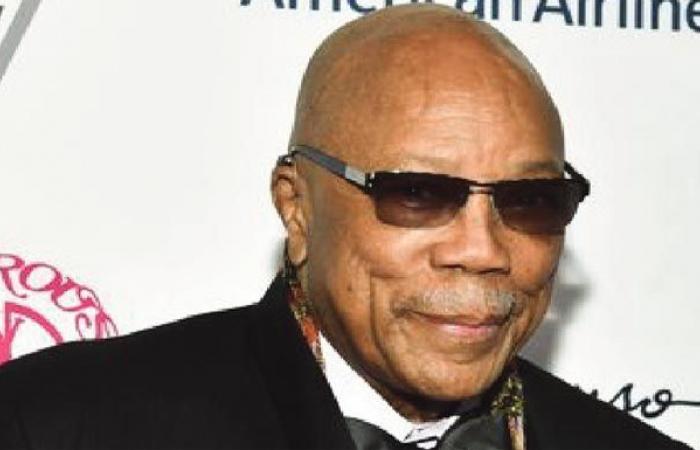He jammed with Ray Charles, managed Frank Sinatra, produced Michael Jackson and launched Will Smith: Quincy Jones, who has died at 91, was a legend of American music.
“Please leave your ego at the door!” The aura of “Q” was such that he could allow himself to welcome Bob Dylan, Tina Turner or Stevie Wonder with his words.
It is 1985 and the producer has the difficult task of getting around thirty stars to sing together within the “supergroup” “USA for Africa”.
Quincy Jones definitely entered the legend by producing Michael Jackson’s three best albums: “Off the wall” (1979), “Bad” (1987) and especially “Thriller” (1982), the best-selling album of all time. history, more than 100 million copies
“We are the world”, a charity song for the fight against famine in Ethiopia, will be one of the best-selling 45s in history, with more than 20 million copies sold.
Quincy Jones is then at the height of his glory. The journey has been immense for the musician born in the underbelly of Chicago on March 14, 1933.
He was very young when his mother, schizophrenic, was interned in a psychiatric asylum. His father, a carpenter, obtained a divorce and moved to Seattle, where he started a new family.
Young Quincy imagined a gangster’s destiny when, at age 11, he touched a piano for the first time. “I played just one note and it changed my life.”
He took up the trombone and the trumpet and began to scour the local clubs. At 14, he met Ray Charles, two years his senior.
“We had to play all the variety of the time, rhythm and blues, striptease music, polka… Afterwards, we would get together and play bebop all night long. tried to make everything sound bebop and Ray said ‘no, you have to accept the music for its deep soul’, he said in his memoirs.
An open-mindedness that the famous pianist Nadia Boulanger also taught him when he moved to Paris in 1957.
In France, the jazzman, who had already played with Dizzy Gillespie, Duke Ellington and Count Basie, met Stravinsky and Messiaen, worked with Henri Salvador, Jacques Brel, Charles Aznavour.
Later, he would collaborate with Nana Mouskouri as well as Joao Gilberto, or the master of Argentine tango Astor Piazzolla.
While the civil rights movement was in full swing in America, Quincy Jones discovered new recognition in Europe.
“In the 1950s, Paris was a fantastic city for black American musicians. Here, unlike in the United States, we found tolerance and curiosity for our work.”
Returning to his native country, in 1961 he became the first African-American to reach a management position in the recording industry, becoming vice-president of the Mercury Records label.
Three years later, he composed the music for the film “The Pawnbroker” by Sidney Lumet, again a first for a black artist. He will sign around thirty others.
At the same time, he continued his work as an arranger and conductor, notably alongside Frank Sinatra, with whom he became his regular collaborator.
Astronaut Buzz Aldrin even took his arrangement of “Fly me to the moon” for the first trip to the Moon.
In 1978, he made a crucial meeting: Michael Jackson, who was seeking to emancipate himself from the Motown universe.
Quincy Jones definitely entered the legend by producing his three best albums: “Off the wall” (1979), “Bad” (1987) and especially “Thriller” (1982), the best-selling album in history, more than 100 million copies.
However, the trumpeter does not forget his roots. In 1991, he convinced Miles Davis to revisit his classics for a historic concert at the Montreux jazz festival (Switzerland), of which he was then artistic director.
Quincy Jones, who appeared on more than 400 records, received 28 Grammy Awards during his lifetime.
A jack of all trades, he also produced films (“The Color Purple” by Spielberg, 1985), series (“The Fresh Prince of Bel-Air”, which launched Will Smith in 1991), created “Vibe”, a reference magazine for urban cultures and participated in “Qwest TV”, a sort of “Netflix of jazz”.
But nominated seven times for the Oscars for his work, he never received a statuette.
Married three times, he had seven children. In 2018, he boasted in GQ magazine that he had 22 girlfriends around the world, spoke 26 languages and had undergone treatment to live to be 110.






